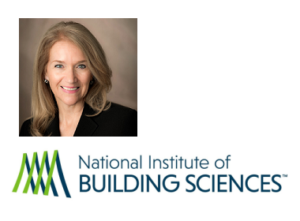It is my personal belief that you must know and understand the limitations of your products, business and skills to be successful in any trade, but most especially in the polished concrete industry. Each job brings a unique set of challenges to the polishing process. Understanding what concrete is, how it is placed, and the many variations that can take place from region to region are just a few of the crucial steps when specifying or contracting. Often, the customer is sold a product from a picture and doesn’t understand the complex issues involved in making that product materialize. Although our industry parallels the wood flooring and natural stone trades, we are not dealing with a manufactured product. Each project is hand-crafted on-site and goes through many environmental and mechanical challenges before the end.
While we may not be able to control many of the variables related to concrete and the polishing process, we are able to expand our threshold of personal and business limitations. We do this every day by learning from either our own mistakes or those made by others (and some can be rather costly!). Gaining knowledge from reputable resources is always a valuable investment. Networking with other contractors and getting feedback on major issues and processes can also be extremely valuable.
The Concrete Polishing Association of America strives to fill this void in our industry. We are constantly looking at ways to better inform the contractor, architect, designer, general contractor and consumer of the benefits and limitations associated with polished concrete. We offer monthly training classes that go far beyond the basics and help teach the mechanics of the polishing process. This equips the mechanic with the knowledge to adjust to the changing variables at the job site. We have also accumulated a glossary of terms to assist with communication and understanding of the products and processes.
But that is just one aspect of what the CPAA is doing for the industry. As a business owner and polishing contractor, it is comforting for me to know that there is an independent, nonbiased organization that shares my concerns at the job site. What I mean by that is this: With the onset of “industry standards” involving procedures and methods, I don’t just have Mr. I.E. Smith (I.E. stands for Internet-educated) trying to tell me, the trained professional, how to polish a floor. Instead, I have a general procedural outline to follow, designed by other quality contractors who have been through the turmoil and job-site issues and emerged on the other side wiser and willing to share their experience. I also have a formal organization to refer to when there are questions concerning job-site procedures. The CPAA is a resource for architects, general contractors and polishing contractors to alleviate job-site practices that are detrimental to the polished concrete industry and/or the final product for the customer. The common goal of the CPAA and the contractor is to ensure the customer gets the best quality possible and the final product is properly processed to offer exceptional performance.
Contractors that I have talked to want to do their best for the customer. Some are better equipped than others in equipment, business practices, talents and experience. But nonetheless, they all want the same thing — a happy customer that will refer them for future work.
I think it’s about time that we combine our efforts and resources to support the CPAA. We need to work together to ensure we have mechanical and ethical standards for everyone to follow. Together, we can ensure that polished concrete will be a viable alternative to traditional floor coverings in the future.
The CPAA is growing to meet the demands of the industry. We have already posted a Commercial New Construction concrete polishing specification on our Web site. Within a few months, we will add Residential New Construction as well as several versions of renovation specifications. Members who want to be a part of leading the industry are urged to roll up their sleeves and pitch in. The CPAA is not an organization for the elite contractor, but it helps the contractor become elite.
Where are we going? We are forging a path for others to follow that will lead to a sustainable industry.
What are we doing? What must be done to ensure the future of our industry. The only other question is, who is willing to help?















